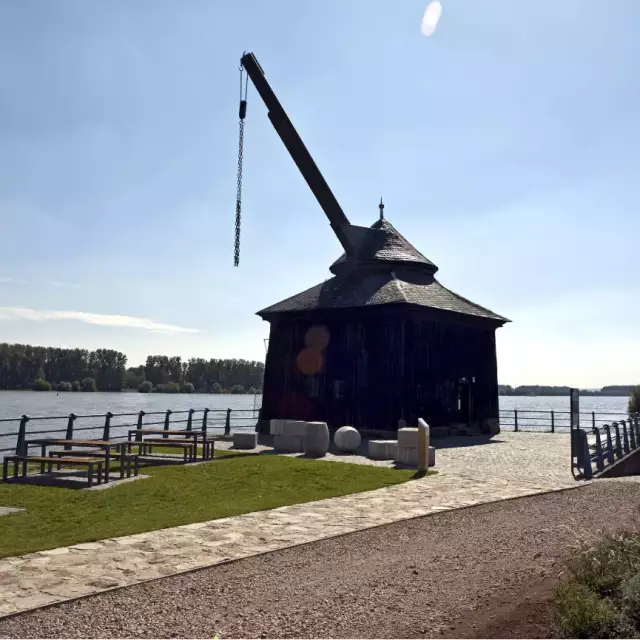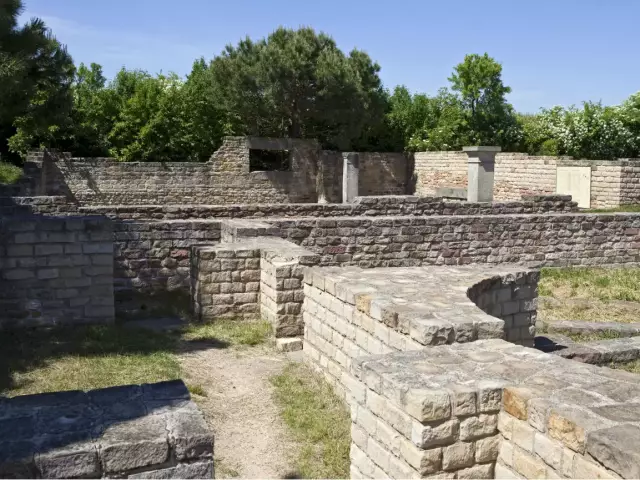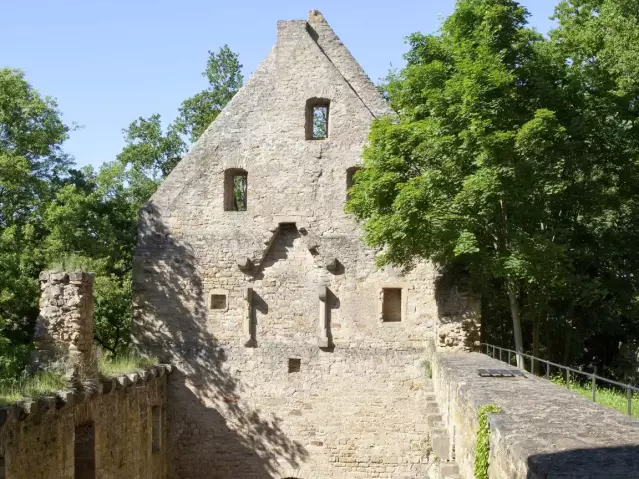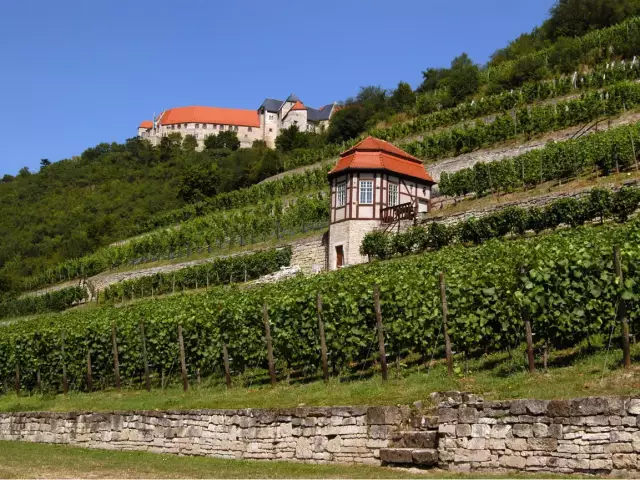The Wine Crane of Oestrich

The historic crane for loading wine barrels onto boats shipping along the Rhine is not only a symbol of the town Oestrich-Winkel, but also an expression of the importance of Rheingau wine for the marketplace. In 1780 that totaled over 500,000 litres of wine.
It is a landmark of the wine town Oestrich-Winkel: The crane for loading wine onto boats shipping along the Rhine is the only surviving witness for the technique used in former times. From this spot, new barrels arrived and many thousands of full ones left, starting their journey across the world.
Until 1926, the crane which was driven by manpower, was still working every day to ship the wine from the Rheingau onto the Rhine barges. The crane was built between April 1744 and February 1745. No less than 170 cubic meters of sandstone were needed for the foundation – a truly enormous monument of viticulture on the banks of the Rhine.
It was the archbishop's privilege to operate such wine cranes in those times. The fees for its usage, collected by the master of the crane, were exactly defined. Thus, there were only a few cities in the Rheingau who owned the right to operate such a crane. In the 15th century, only Eltville, Rüdesheim and later on Lorch owned such a privilege.
The construction of the wine crane of Oestrich-Winkel was based on a 2000 year old technique, used already by the Romans on their construction sites: Two enormous milling wheels were set in motion by two laborers who tread forward on the inside of the wheels. The wheels then lifted the loads with the help of huge chains from the ship. The crane's upper part featured a movable crane arm which could be turned to deposit the loads onto the ship or onto the land. The load in Oestrich consisted at that time mainly of tree trunks - and of course wine casks. Oestrich-Winkel has good reasons to claim the title of the biggest wine town in the state of Hessen: for centuries, wine played the leading role here as countless wine taverns and businesses serving the industry attest.
City rights, however, were only awarded in 1972 when the communities of Oestrich, Winkel and Mittelheim were fused to become one city. The city's viticulture is, of course, much older: In Winkel, a Roman pruning knife was found – the name Winkel might well be derived from the Latin word "Vini cella" which means wine cellar. Its first historic notation took place in 850 when the famous abbot Rhabanus Maurus became archbishop of Mainz and gave out food and wine to the poor in his diocese of Winkel. The so-called "Grey House" is said to have been Maurus' residence and is now considered to be the oldest stone house in Germany.
Oestrich probably took its name from its position in the east. Here, a range of wealthy families built their mansions along the bank of the Rhine throughout the 17th and 18th century. The famous Schloss Vollrads and Schloss Reichartshausen also bear witness to that prosperous time. The wine crane, however, has remained the landmark of Oestrich-Winkel, its simple, boarded façade hiding the ingenious technique within. The old workings on the inner floor are open on weekends and in the summer months. The wine to go along with the history is served right next door – in one of the many wine bars on the banks of the Rhine.




